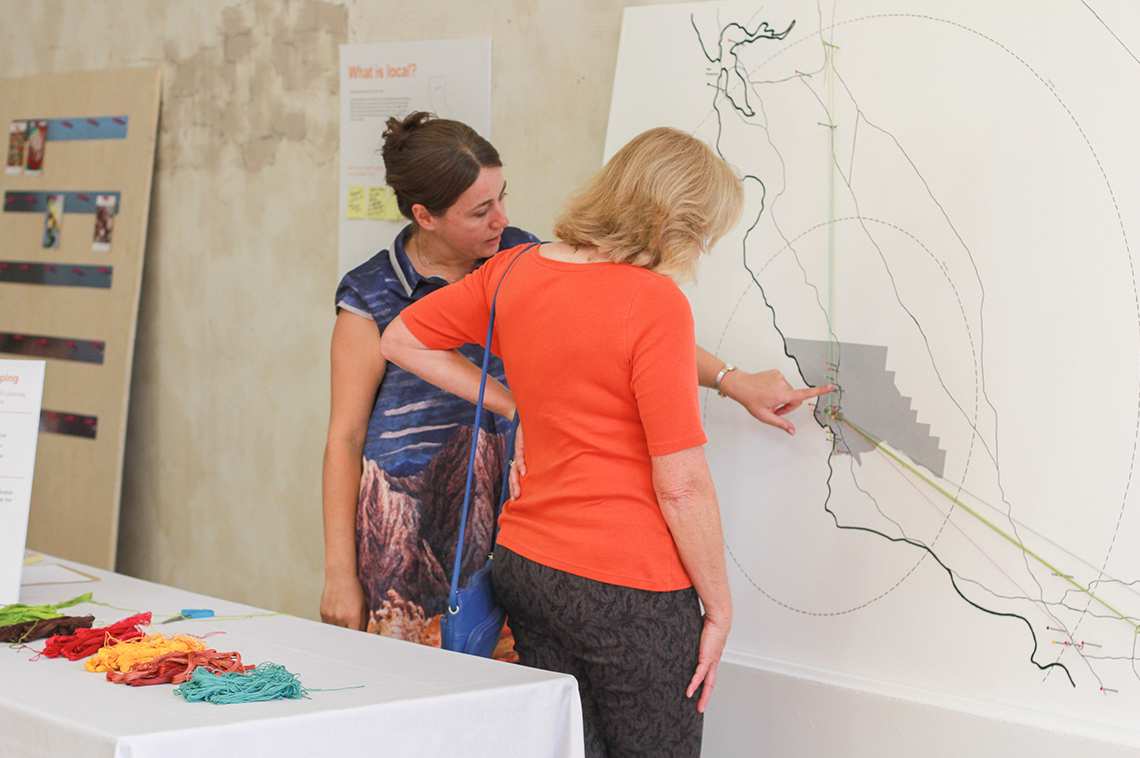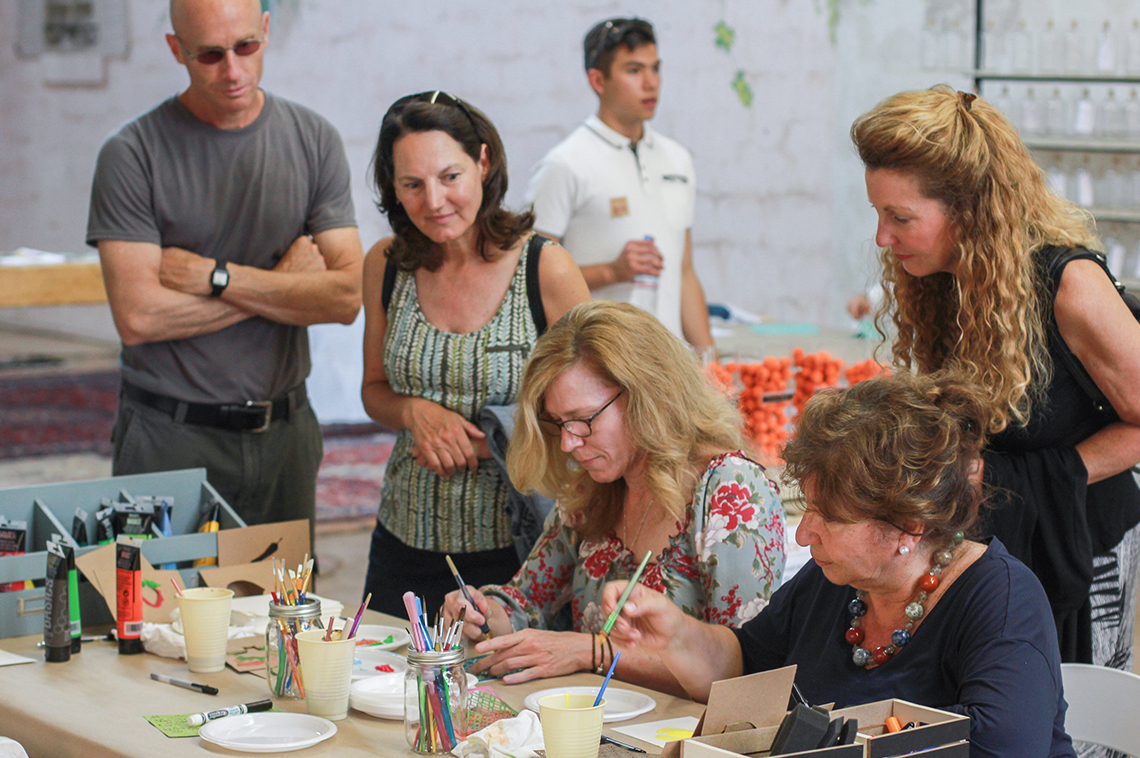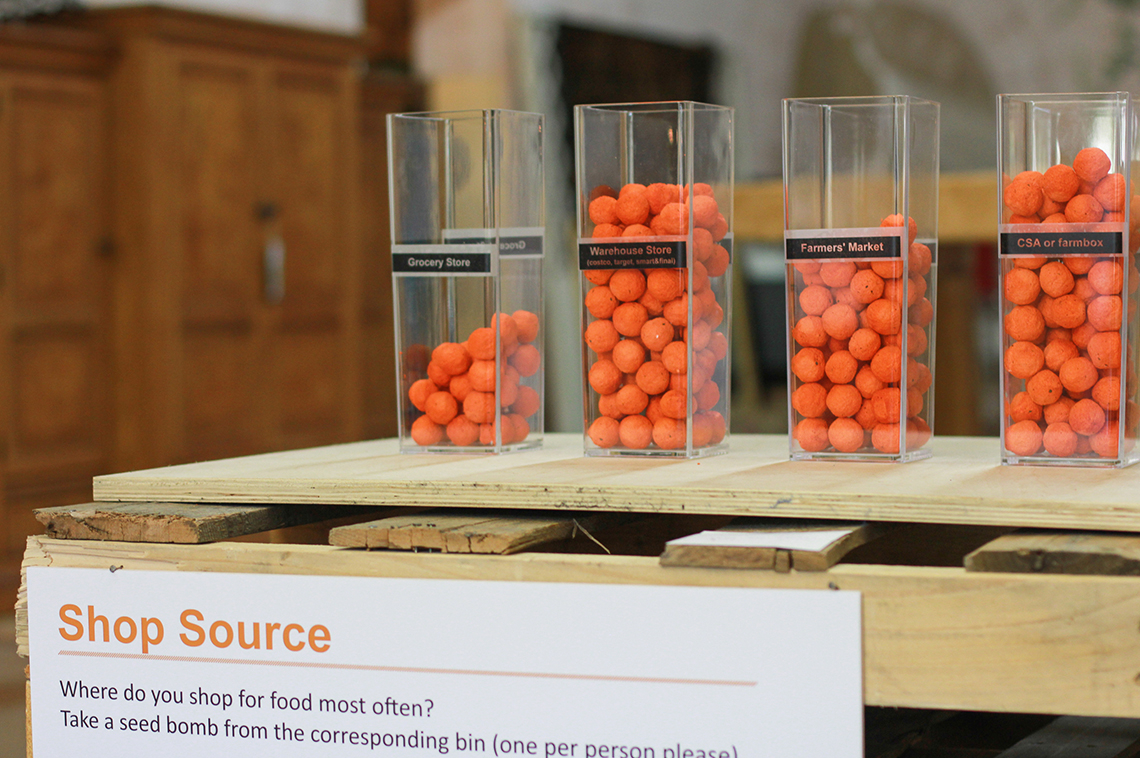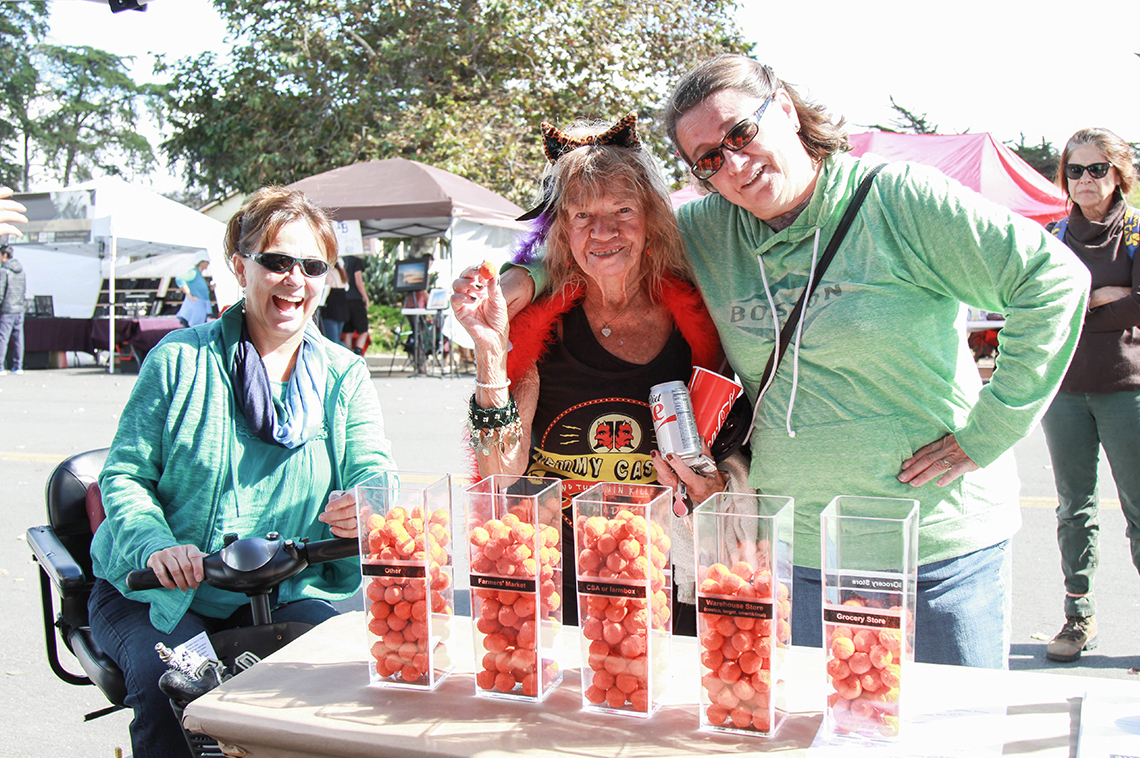



San Luis Obispo County (SLO), CA is a highly productive agricultural area, producing an estimated seven pounds of fruits and vegetables per resident per day. Only 7% of locally grown food is consumed within the county. Community food activists wanted to create a local food distribution network at the county level. In 2015 ArtPlace funded this support for community efforts already underway. SLO MAP started by mapping food resources and system flows, conducting interviews and creative workshops to explore understandings of food/place across the county, and developing installations that foster more engaged stewardship of the food system. This is a communal vision to support small farmers, enhance food security, improve health and nutrition, and cultivate a shared sense of place. We caught up with Ellen Burke for an update on their project.
If only 7% of food grown there is consumed there - this means that 93% of that productivity is exported, both within the United States, and to 82 countries abroad. The year-round growing climate and proximity to industrial agricultural areas like Salinas Valley and the Central Valley means that farming is dominated by corporate growers, and increasingly, smaller farmers are shut out by high land prices and lack of access to markets.
Further aggravating the issue for small farmers is the way in which local residents are uncritically accepting of ‘local’ food, often assuming that because there is an abundance of actively farmed agricultural land, they are participating in a local food economy by default. This both disempowers small local farmers, and creates community food resilience vulnerability, in which the County is dependent on imports trucked in from the nearest metropolitan areas 200 miles to the north and south.
SLO Map is a community engagement project that uses maps and art to educate and create moments of connection between participants, their surrounding landscape and regional food systems. Over the past eighteen months, a series of four workshops were held, located across the county to engage different communities including the major cities in North and South County, an unincorporated coastal community, and a farmworker community. We held the workshops to align with existing community programming, including art walks, street fairs, and swap meets, with the goal of increasing participation to folks who often can’t attend community planning meetings, including youth and elderly.
"SLO Map is a community engagement project that uses maps and art to educate and create moments of connection between participants, their surrounding landscape and regional food systems. "
To foster a connection with small farmers we displayed quotes and photos from our interviews with farmers in which they discussed the challenges of small scale farming in the County, next to a table in which participants were invited to send a “message in a bottle” to a farmer or farmworker. Both an act of community building (in which participants imagined for a moment the real human at the end of their food chain) and a form of survey, the messages revealed a surprising spectrum of attitudes, including negative attitudes (“how do you feel about draining the lake for your profits”) which will help inform next steps by community organizers.
Another activity was a large scale map of the region that showed the chain grocery stores in the County, and their respective distribution centers in metropolitan areas within a 200 mile radius. Participants were asked to connect the store they shopped at most frequently with its distribution center, creating a collective foodshed map. While the data collected from the map was useful, it was the conversations people had while adding to the map that were really the point. Overall people were surprised that what they bought at Trader Joe’s or Safeway wasn’t sourced from the fields in the county, and were interested in learning more about the real logistics of the food system. As one participant shared, “the journey of our food was interesting to visualize.”
We developed a number of surveys, which took different forms, from a seed bomb give away that revealed where the community shops (the majority shopped at chain grocery stores), to grocery lists and paintings of favorite produce to prepare (avocados and strawberries were dominant) to paper surveys asking people about challenges of accessing food. These surveys are a wealth of data to be used by our various community partners, including the Food Bank, the Promotores Collaborative (a Latinx serving health advocacy group) and various County agencies.
Most poignantly they revealed the two different worlds of the County, one in which local farming is important for personal and environmental health, and one in which it is a source of jobs and income. Finding ways to reconcile and honor these two worlds will be the work of the coming years for local advocates.
The workshops series engaged with an estimated 700 people across the County. But to make systemic changes to the support for small farmers, long term strategies for education and engagement have to be implemented. Informed by these workshops there are a number of new activities being carried out by various partners, including quarterly Farmer/Buyer mixers, menu and drink specials featuring local farmers at downtown restaurants, and integration of local produce items in school menus.





